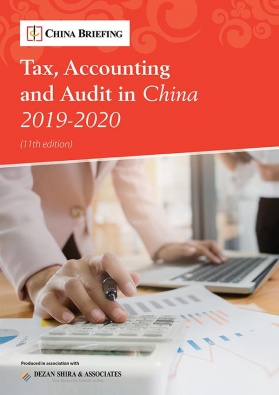China-Singapore FTA: Protocol to Upgrade Agreement in Effect from October 16
- The protocol to upgrade the China-Singapore Free Trade Agreement is in effect and expands the original scope of the agreement.
- This will boost cooperation between the two sides on rules of origin, customs procedures and trade facilitation, trade remedies, service trade, investment and economic cooperation, e-commerce, competition policies, and the environment.
- China and Singapore also exchanged views on the joint construction of the Belt and Road.
The protocol on upgrading the China-Singapore Free Trade Agreement (CSFTA) took effect on October 16, 2019. It was officially announced by the two sides on October 15 in Chongqing.
The announcement came after Chinese Vice-Premier Han Zheng and Singaporean Deputy Prime Minister Heng Swee Keat co-chaired four important bilateral meetings.
These included the 15th China-Singapore Joint Council for Bilateral Cooperation Meeting, the 20th China-Singapore Suzhou Industrial Park Joint Steering Council Meeting, the 11th China-Singapore Tianjin Eco-City Joint Steering Council Meeting, and the third China-Singapore (Chongqing) Demonstration Initiative on Strategic Connectivity Joint Steering Council Meeting.
What’s in the protocol?
The protocol upgrading the China-Singapore FTA covers cooperation in six sectors contained in the original CSFTA – rules of origin, customs procedures and trade facilitation, trade remedies, service trade, investment, and economic cooperation and adds three new sectors – e-commerce, competition policies, and the environment.
An official at China’s Ministry of Commerce (MOFCOM) revealed that the most significant changes made were in the ‘investment’ chapter, which accounts for almost a quarter of the protocol.
The two sides have agreed to offer each other a high-level of investment protection – applying ‘national treatment’ and the ‘most-favored-nation treatment’ status (Article 3 and 4 in new Chapter 10) to each other’s investors.
By national treatment, it is meant that each side will not be treated less favorably than their own investors with respect to the management, conduct, operation, and sale or other disposition of investments in its territory.
Most-favored-nation treatment means that each side will not treat the other side less favorably than investors from a third country with respect to the management, conduct, operation, and sale or other disposition of investments in its territory.
In the field of courier services (Section B in Appendix 10), Singapore has, for the first time, scrapped limitations on market access and the ‘national treatment’ of Chinese investors.
Further, under the protocol, China and Singapore signed a Financial Service Side Letter. Singapore will grant a Qualifying Full Bank (QFB) license to one of the Chinese banks, making China the country holding the largest number of QFB licenses in Singapore.
The agreement in context
China currently has 16 FTAs in effect with 24 countries or regions, including the ASEAN-China FTA, where Singapore is also a member country.
As the trade war with the US continues, China is actively diversifying its economic relationships with new and old partners and strengthening cooperation with Belt and Road countries, including Singapore.
According to Chinese government reports, the two sides also exchanged views on the joint construction of Belt and Road during meetings before releasing the upgraded protocol.
China and Singapore have agreed to enhance connectivity, financial support, third-party cooperation, legal and judicial cooperation under the framework of the Belt and Road Initiative.
Background
In 2017, China and Singapore’s bilateral trade totaled US$137.1 billion. Singapore was the second largest source of China’s actual foreign investment, following Hong Kong with US$4.83 billion investment.
China and Singapore had formally initiated the original version of the SCFTA on October 23, 2008, which came into force the following year, on January 1.
Since 2015, the two countries were engaged in negotiations on upgrading the SCFTA. After three years, the protocol to upgrade the FTA was finally signed on November 12 last year.
Now, that the signed protocol is in effect, regional investors should take advantage of the improved trade and investment ties between China and Singapore.
About Us
China Briefing is produced by Dezan Shira & Associates. The firm assists foreign investors throughout Asia from offices across the world, including in Dalian, Beijing, Shanghai, Guangzhou, Shenzhen, and Hong Kong. Readers may write to china@dezshira.com for more support on doing business in China.
- Previous Article Wie sich eine Abkühlung der chinesischen Wirtschaft auf Ihr Geschäft auswirken könnte
- Next Article Back Office Automation in China – New Issue of China Briefing Magazine







